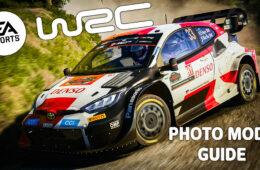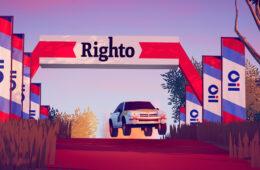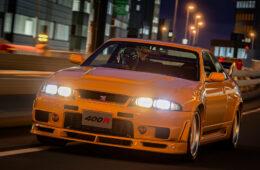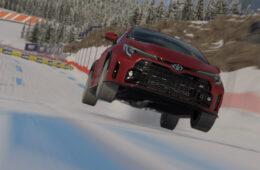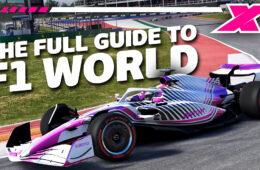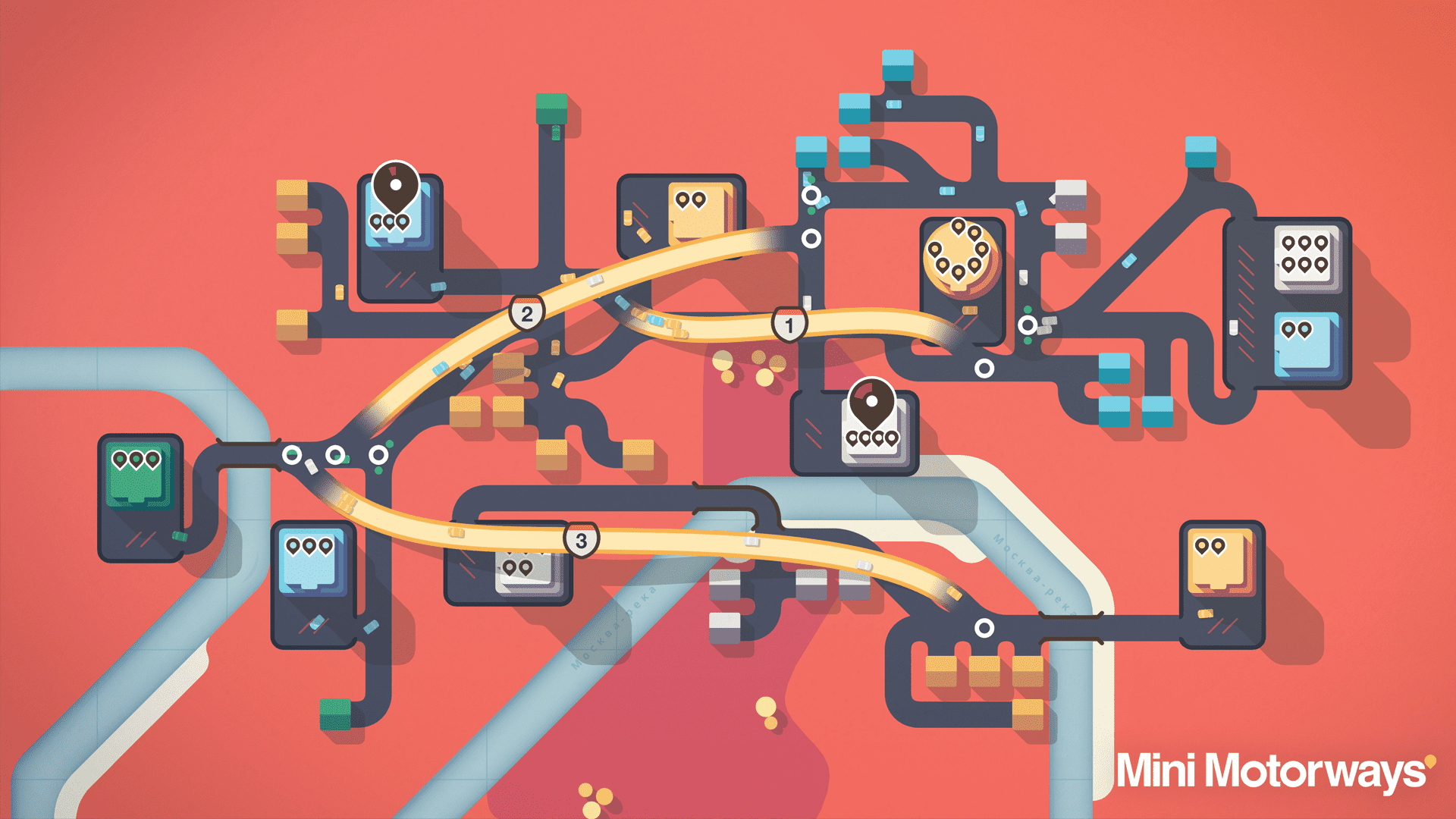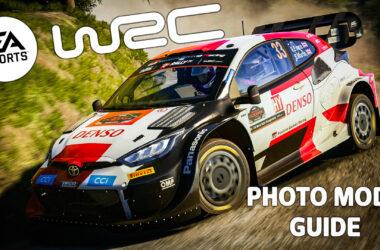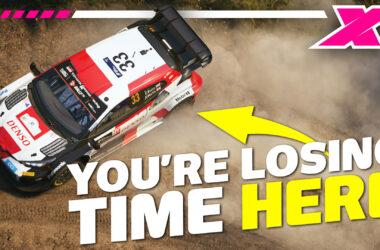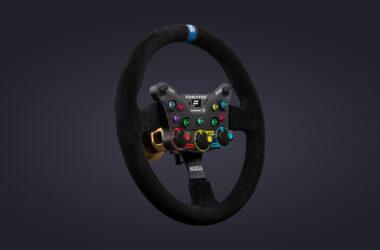By Rich Hutson and John Munro
It’s not an easy task going up against the big names of sim racing hardware, such as Fanatec, SimCube or Thrustmaster, but Moza Racing is looking to bring its name to the more budget-friendly table thanks to the new R9 direct drive wheel base – and paired for this review – the GS steering wheel.
Fanatec has been the talk of the town for months now as its CSL DD and Gran Turismo DD Pro have dominated the entry-level direct drive market, garnering glowing reviews from us here at Traxion.GG.
It almost feels like purchasing a Direct Drive base for over £1,000 to more than likely not use its torque headroom is a frivolous idea, hence why manufacturers are dropping the Nm, and consequently the price.
But, is this recent MOZA range addition a blasé attempt to cash in on this new niche, or fully deserving of your attention?
Featuring 9Nm of direct drive torque to play with, in an enclosure somehow smaller than that of the CSL DD, the MOZA R9 is already off to a good start.
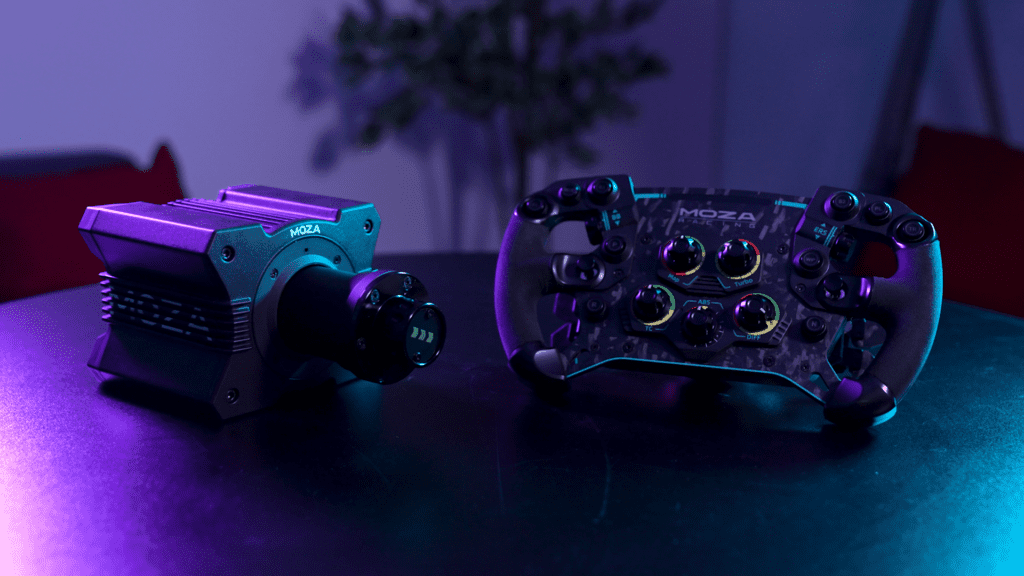
Fanatec’s offerings in this torque range default at 5Nm, but with the optional Boost Kit add-on, can crank up to 8Nm. The R9 does that and more right out of the box as-is.
As for where things begin to differ from Fanatec, the R9 base is compatible only with PC, irrelevant of which wheel you throw on it. Console support isn’t present at all, and as far as we’re aware, never will be.
Pair that with the GS wheel from MOZA, and you’ve got yourself a pretty nice looking GT-style setup.
First up, these two items are very much the real deal. The packaging and unboxing experience is gorgeous.
Both the wheel and base come in robust boxes with adequate padding and even arrive in little drawstring bags.
The aluminium alloy exterior of the R9 wheel base is solid (this thing is heavy) and acts as a giant heatsink for the motor inside. On the rear, you have your PCI Express power and USB Type B connectors, two ports for an emergency stop and a dashboard peripheral.
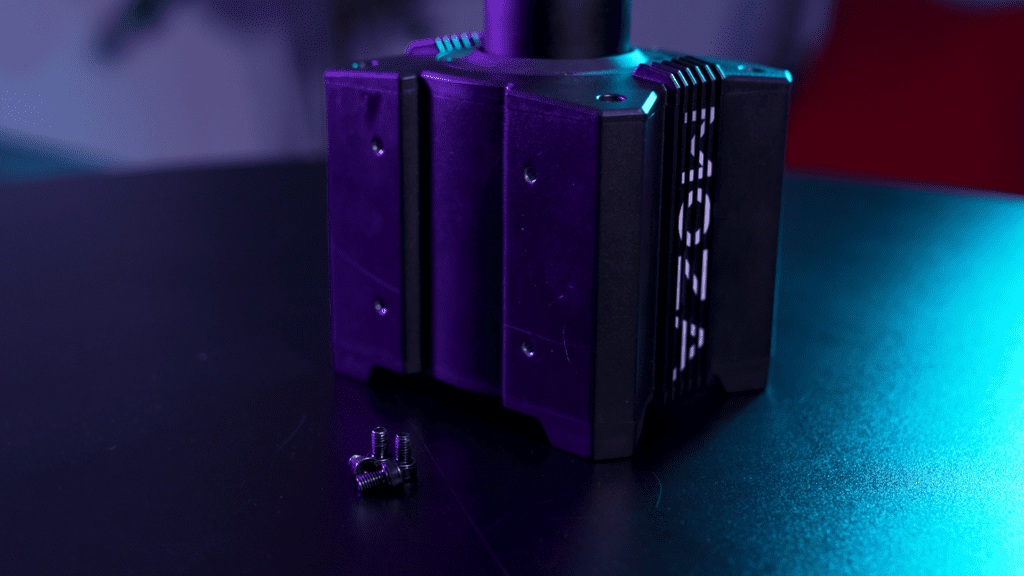
Notice there’s no pedal input. Whatever your feet are using, they’ve got to connect natively to your PC via USB. There are four mounting holes on the underside of the base and, adding to the list of seemingly tiny things that gets us excited, you receive mounting hardware in the box – and that’s unusual. Class-leading.
We stuck it on our Next Level Racing GT Track cockpit for testing and the F-GT Elite studio rig for b-roll, and the mounting points lined up with the pre-drilled plates perfectly. It’s safe to assume that whatever other hardware you’re rocking, you can mount this base.
As for the rim, my word the GS wheel is lovely. Remarkably solid thanks to its carbon fibre construction, and the Alcantara grips are delectable. It’s also a little wider than you’d probably expect at 300mm, about 30mm wider than the ClubSport Formula from Fanatec for example.
The inputs on the GS wheel are where this rim really shines. You’ve got two pressable thumbsticks on opposing sides of the rim, five crisp labelled knobs in the centre and two pressable thumb encoders towards the top.
I’ve said it before, you have to really cock up inputs to make them feel overly bad, and thankfully that is not the case here. Adorning the back of the rim are two pairs of paddles, the larger two being your usual shifters with the magnetic operation, and the lower pair being analogue inputs.
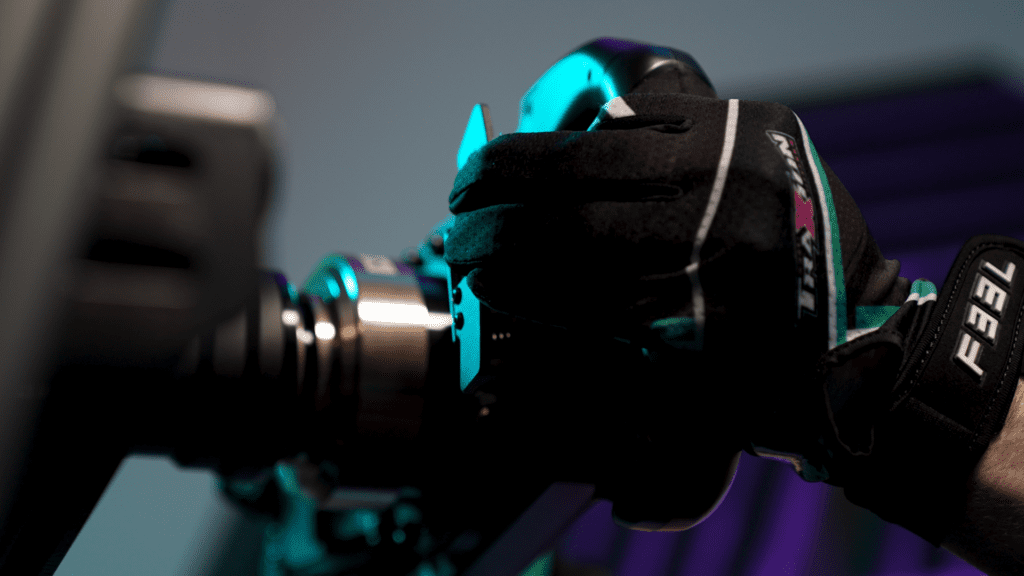
Saving the best for last, these are the best buttons I have ever used on a steering wheel. MOZA promotes these as being ‘keyboard buttons’, and they’re not wrong. They feel like clicky keyboard switches, similar to CHERRY MX BLUEs but with a quieter click and a little more squish.
They feel wonderful and they are RGB addressable along with the rev-counter LEDs. What’s not to love?
Once you have your peripherals rigged, USBs plugged in and, well, the MOZA R9 is a direct drive wheel base. Paging captain obvious, but you genuinely get what you expect. Instant, detailed feedback, quiet yet powerful operation, and thanks to that 9Nm of torque, it could rip your arms off if you needed it to.
The usual benefits you get from direct drive bases are here; clarity for bumps, kerbs and correcting when you’re losing control and about to spin out. But the R9 specifically feels even more precise when representing lock-ups and kerb strikes, for example, when you pit it against similar bases in this power and price range.
While you can buy higher torque wheel bases, including some from MOZA itself, 8 or 9Nm definitely feels to be the sweet spot. Paying for more headroom seems ludicrous, especially forking out for 21Nm only to not use it at full pelt.
Across all the driving titles I tested the MOZA R9 with, 70 per cent power was often my preferred choice, especially during longer sessions. I was getting all the detail I needed from the sim platforms, and never felt like I wanted to crank it higher – even though I could.
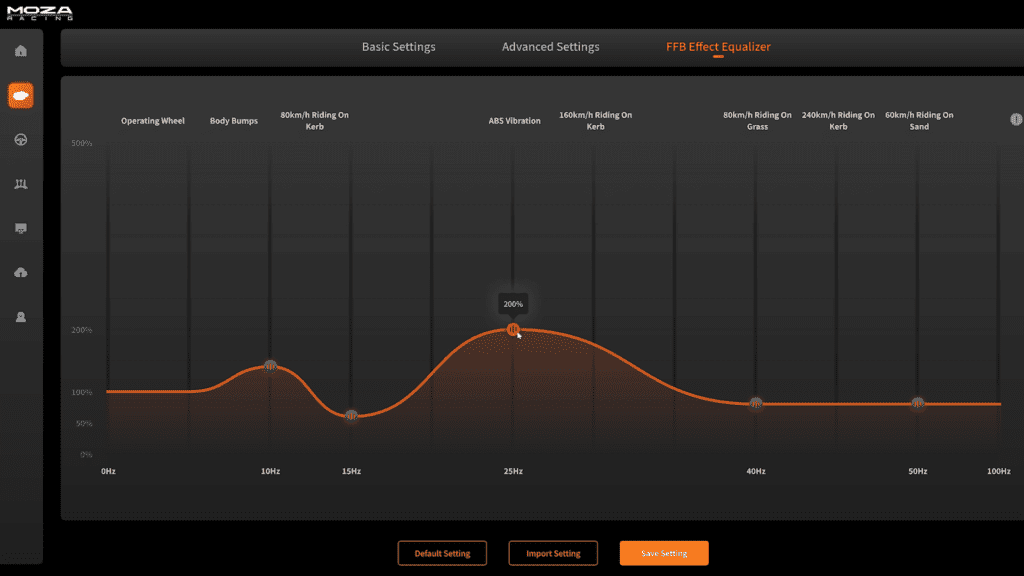
Obviously, one batch of settings doesn’t rule them all, you’ll still need to tweak specifics in the feedback on a game-by-game basis, and that’s where the MOZA Pit House software comes into play.
Quick to install, even less of a reason to read the User Agreement since it’s in Chinese, and you’re off. When changing the feedback settings, you can adjust the forces kicked up by road surfaces, mechanical damping, speed dampening and if all of that sounds a little confusing, there’s even a visual equaliser available – making the process of getting the feedback how you like it astonishingly easy.
Once you’ve got everything how you like it, you can then save it as a file within Windows, and apply them whenever. It’s straightforward to change up the feedback between games and equally straightforward to take those configs and use them on an entirely different PC.
If manual fiddling isn’t your speed entirely, you do have some presets from MOZA themselves for various disciplines. The ‘karting’ option felt perfect for KartKraft, far better than what I attempted to drum up myself.
If you’re using a preset or refining settings, tabbing out of your games, tweaking, and having it work without restarting the game just works. Instant application, no faff. Wonderful.
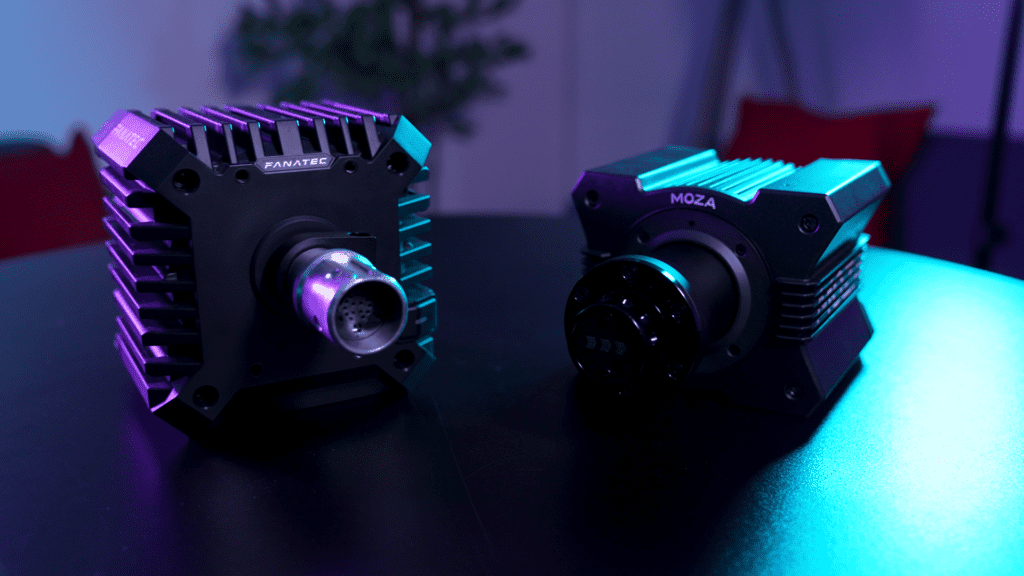
I tested the R9 and GS wheel on F1 2021, KartKraft, rFactor 2 and Assetto Corsa Competizione and it worked absolutely perfectly. You still had to map the wheel buttons to the game, but all-in-all, MOZA and your racing titles speak to each other without a hitch.
While you’re not going to find presets in the games you play for this base like you would for well-known brands like Logitech, some titles do offer some best practices for MOZA products.
However, it didn’t work with absolutely everything. For a smaller, nascent, PC-only brand, compatibility is always a concern. Compared to the big’uns like Logitech, Fanatec, Thrustmaster and the like which have superb compatibility, MOZA didn’t play ball with Dirt Rally 2.0 without doing some game-specific configuration in their software. In its defence, this was more on me than the wheel.
GRID Legends on the other hand unlike Dirt Rally 2.0, isn’t listed as a MOZA compatible game on their website, and although I could map everything, so while you can play it, we received no force feedback. Whether it’s down to MOZA or the game itself needing to be updated to enable support, remains to be clarified.
If the games you play have been mentioned to work no problem, you’re all good. If not, check MOZA’s compatibility with your particular poison. The full list is at the bottom of the main page of its website.

In practice, it can take a while to get used to the width of the rim, and we’re still not 100 per cent used to it yet. A subjective personal preference here, but it feels heavy mid-corner since the weight is more pushed out to the sides. Aches inbound.
The buttons are just as wonderful in practice as they are out of the box and you’ve got plenty of inputs to make mapping everything in-game a breeze. However, the thumb encoders for ERS and brake bias aren’t as nice, and the direction to press in is just awkward for where your hands are.
The ability to change the colours on the rev strip through the Pit House software is a nice touch, not overly unique in this field but still cool nonetheless, but the also customisable backlit buttons aren’t changed through the software. Instead, you push the two awkward thumb dials together and press the buttons to make the colours change, then push the thumb dials together to save.
Why that’s not done in software is beyond us. That’s something we feel MOZA needs to incorporate with a firmware update on the rim.
Finally, the shifters. Magnetic operation is nice in theory, but these are heavy and loud. The magnets are strong, making higher actuation forces a requirement, and if you’re playing something like F1 with fast consecutive downshifts, they’re disruptive and fatiguing, which is a shame.

Okay, price time. The market in this space so far has been looking at about €350-€400 for a budget direct drive base, and the MOZA R9 comes into that ball park somewhat. At $439 excluding VAT and shipping, it is a little steeper than a CSL DD base, but it does have more torque.
If you picked up a CSL DD with the Boost Kit to make it 8Nm versus the R9’s 9Nm, the Fanatec still comes in at about $30 cheaper. As for the GS wheel, that’s $499 ex. VAT, so it’s actually more expensive than the base.
However, taking in mind their performance, build quality and especially the fantastic software, we’d say they are worth it.
Being a PC-only base means the audience is more specific, and you don’t have anywhere near as big of an ecosystem to play with. MOZA make its two more powerful bases and they do have a non-Formula style rim with a few more customisation options, plus a set of pedals and accessories – but that’s it. The rabbit hole isn’t as deep, but for some, they may not need it, nor want to throw more money down it.
These products are premium offerings. No expense has been spared here, no little cheap bits to knock a few cents off. They look amazing, they feel amazing, but they’re not absolutely perfect. The rim is wide and awkward (but not impossible) to get used to, the shifters are loud, that lack of a wider ecosystem might turn some away. Compatibility might be an issue based on what you play and it’s PC only.
But, if the MOZA R9 and GS Wheel tick all the boxes you need, these are fantastic sim racing products.
Full disclosure: The MOZA products written about here were provided by the manufacturer for review purposes. Here is our review policy.

